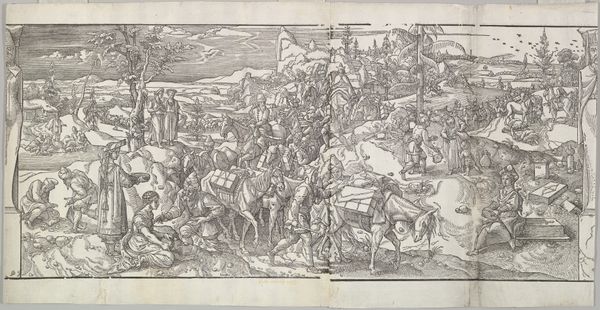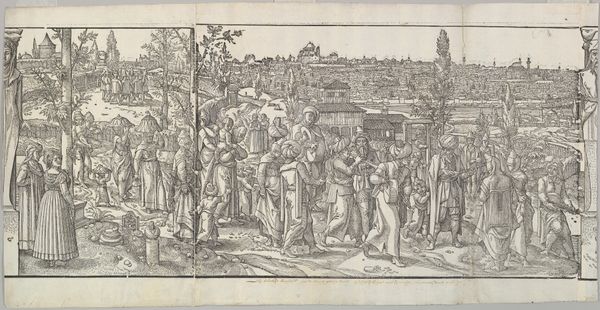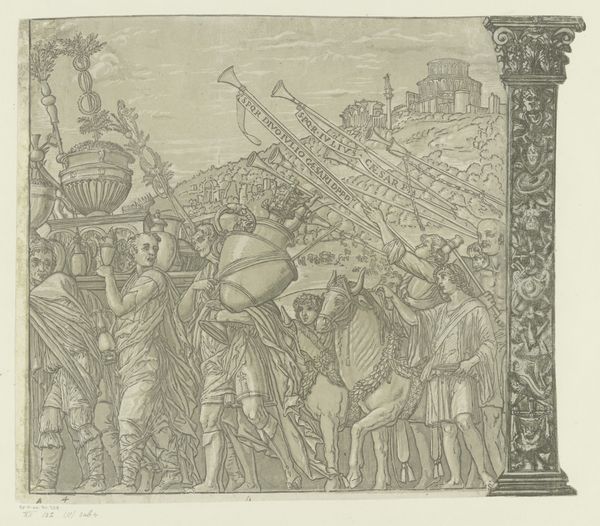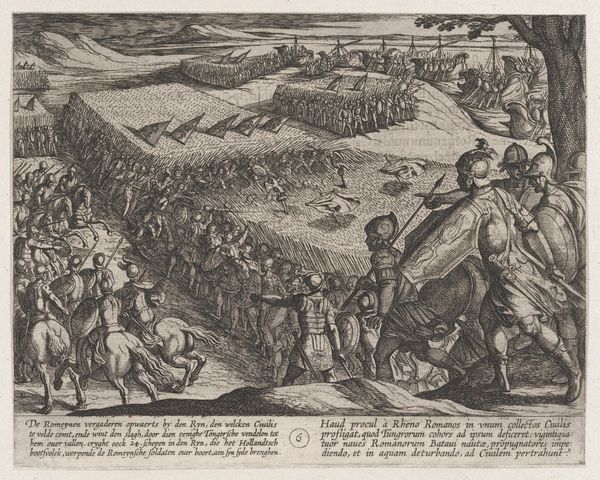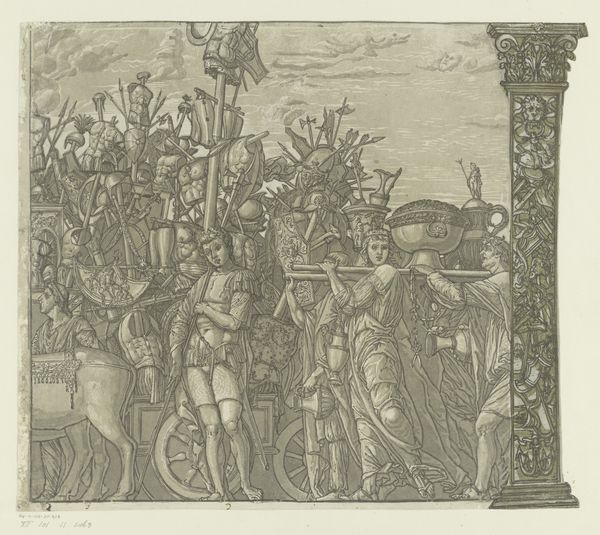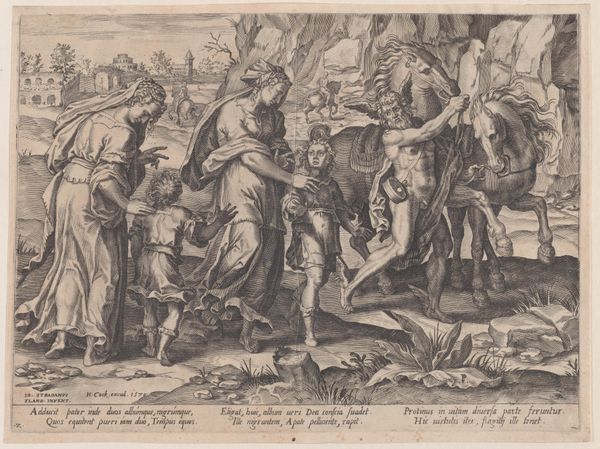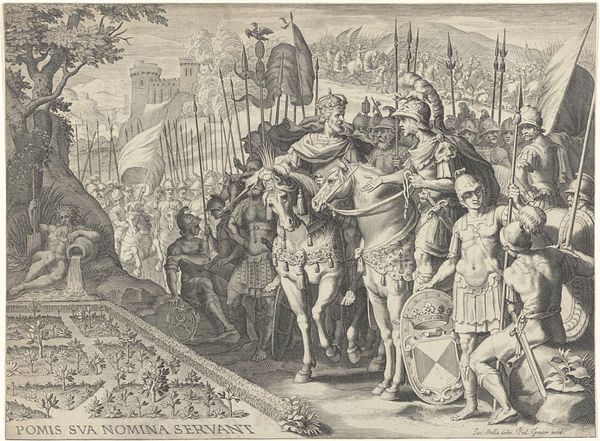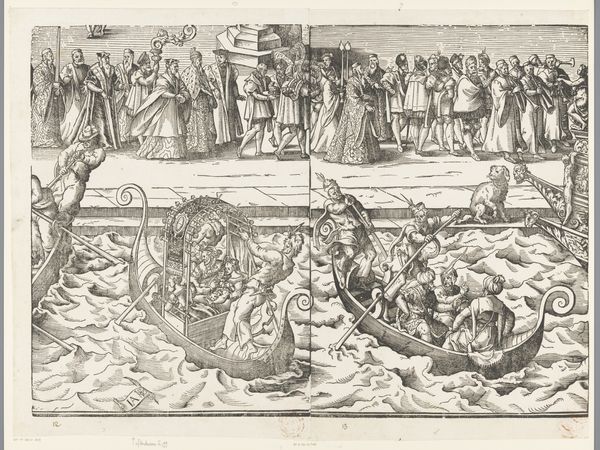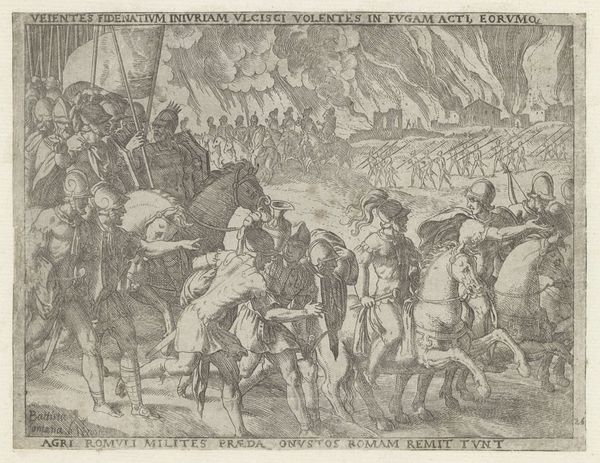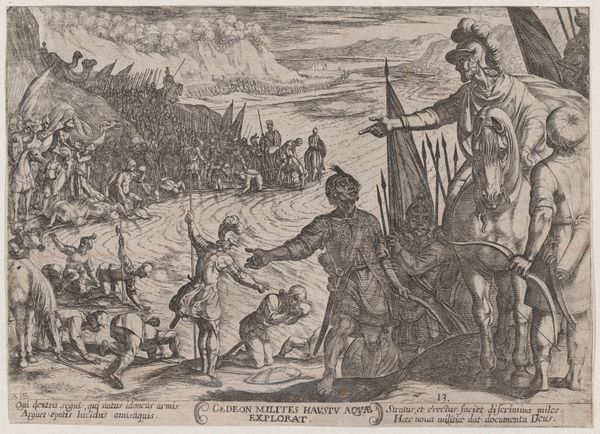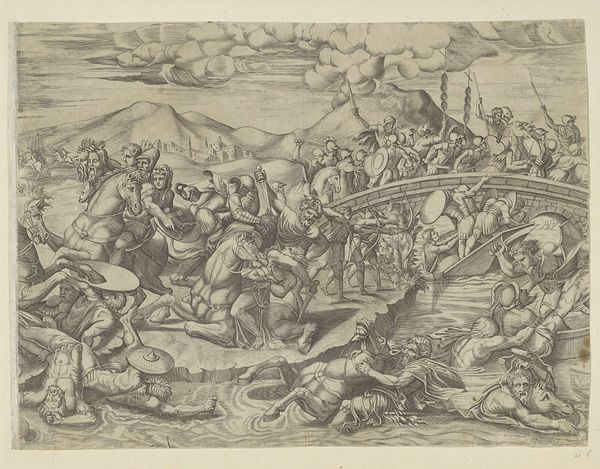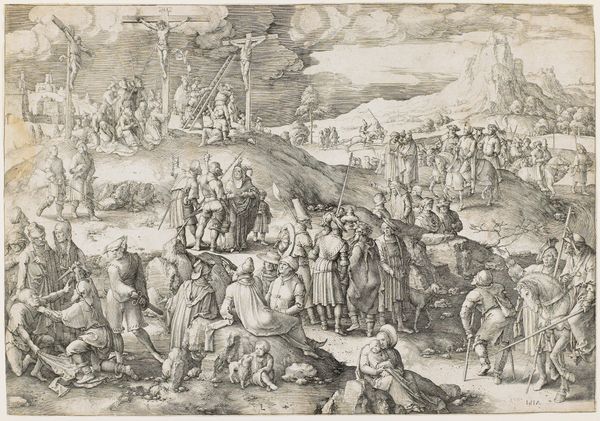
drawing, print, engraving
#
drawing
# print
#
mannerism
#
figuration
#
history-painting
#
engraving
Dimensions: Framed: 33 7/16 in. × 13 ft. 11 5/16 in. (85 × 425 cm) Sheet: 14 3/16 in. × 12 ft. 5 5/8 in. (36 × 380 cm)
Copyright: Public Domain
Curator: Here we have Andrea Andreani's "The Triumph of Julius Caesar," an engraving completed around 1599. Editor: My first impression is of a work overwhelmed by busyness; its strength relies on relentless detail. One sees a continuous parade that barely breathes! Curator: Note how Andreani’s choice of engraving in chiaroscuro woodcut imitates the ancient Roman practice of grisaille painting. The form mimics classical precedent. What meanings are generated through imitation? Editor: Indeed, the procession format itself hearkens back to Roman triumphal arches and parade reliefs. The layering of figures and the trophies are designed to inspire awe, demonstrating power with recognizable spoils of war, cultural dominance via conquest. What are we meant to take from seeing this play out centuries later? Curator: Formally speaking, it is the dramatic use of light and shadow in the composition which provides it dynamism, leading the eye to scan the complete processional frieze. Semiotically, the image evokes temporal concepts tied to linear progression in how we encounter its constituent elements sequentially across panels. Editor: Symbols are abundant here—garlands, trophies, prisoners of war. These motifs visually narrated Roman military power and underscored Caesar's ambition. The repeated imagery aimed to instill obedience and pride; victory meant order. Curator: The repetitive pattern disrupts notions of foreground and background. Its flatness reminds us of its artificial construction on a series of panels as opposed to mimicking perspectival depth. Editor: So it reflects triumph as crafted spectacle more than an earned reality? Well, by repeating symbolic objects and the very act of processing as a concept, viewers get the message: Empire equals recognizable, manageable motifs which equals "reality." Curator: Perhaps it speaks more to the limitations of early printmaking. Editor: That limitation can be reframed to illuminate, nonetheless! What endures for me are layers of intent to construct dominance that survive long after empires fade. Curator: Thank you for providing valuable contextual avenues for appreciating its impact. Editor: It's been a pleasure! Now, onto our next piece!
Comments
No comments
Be the first to comment and join the conversation on the ultimate creative platform.
